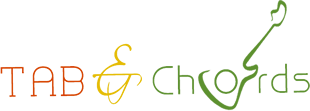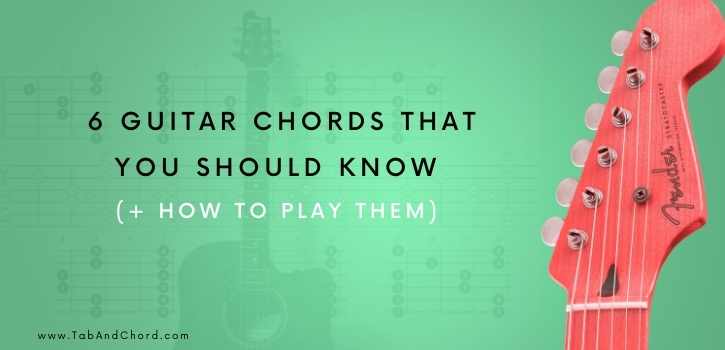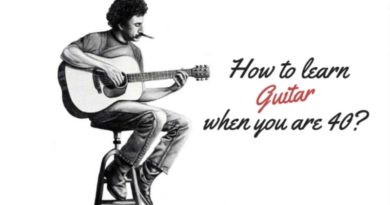6 Guitar Chords That You Should Know (+ How to Play Them)
As a guitar player, it is important to know a variety of chords. Chords are a set of pitches or frequencies that consist of two or multiple notes. It lays the foundation for most music and can be used in various ways. They can be played on any string instrument but are most commonly associated with the guitar.
If you’re just starting out learning how to play the guitar, there are many different chords for classical guitar that you can learn. This blog post will cover six important beginner guitar chords for classical guitar that every musician should know.
Two Main Types of Chords
Guitar chords are a fundamental part of playing guitar. They are created by placing your fingers in specific positions on the fretboard and can be played in various ways. There are two main types of guitar chords: barre chords and open chords:
Open Chords
On the other hand, open chords include major chords. These are played by strumming all the strings while holding down one or more notes with your fingers. These chords tend to be simpler than barre chords because the common guitar chords fall in this type and are often used in beginner guitar exercises.
Barre Chords
Barre chords are considered more advanced than open chords as they contain a minor chord. It is played by holding down one or more strings with your index finger while strumming the other strings. This can be done differently, and the resulting guitar chord shapes can be moved up or down the fretboard to create different chords.
6 Chords You Need To Know
Learning how to play these chords will give you a solid foundation on which you can build your guitar-playing skills. Once you have mastered these chords, you can begin learning more complex chords and progressions. With practice, you will be able to play any popular songs that you want!
1. A Major Chord
This chord is one of the first chords you should learn to play on the guitar. To form an A major chord:
- Put your first finger on the D string’s second fret, your second finger on the G string’s second fret, and your third finger on the B string’s second fret. Because you have to put your fingers in a confined space on the second fret, this chord could be difficult to play. When strumming this chord, only use the top five strings while omitting the low E note.
2. F Major Chord
Because many beginners are taught the F major chord as a barre chord came from an open E Major chord shape, some individuals are afraid of it. Since the F major chord, which you will learn today, has three notes, it is significantly simpler.
There are several methods to play the F major chord on the guitar. The most common way is to;
- Place your first finger on the E string’s second fret, your second finger on the A string’s third fret, and your third finger on the high E string’s third fret.
3. G Major Chord
The G major chord is a very popular chord used in many songs. The reason why it is so well-known is that it is very easy to play. To play the G major chord, all you need to do is;
- Place your middle finger on the low E string’s third fret, your ring finger on the A string’s second fret, and your index finger on the high E string’s first fret. The G major chord is then played by strumming all six strings.
4. C Major Chord
This Major chord is one of the most basic chords in music. It is made up of just three notes – C, E, and G. To play;
- Place your finger on the low E string, second fret, and pluck it. Then, pluck your finger on the A string’s third fret. Finally, pluck the high E string by placing your finger on the second fret. The end product should be a distinct, ringing C Major chord.
5. D Major Chord
Another highly popular beginner guitar chord that shouldn’t cause you too much trouble is the D major chord. To play;
- Grasp the second fret of the high E string with your second finger, then the third fret of the B string with your third finger, and the second fret of the G string with your first finger. Strumming should only be done on the top four strings, leaving the low E and A out.
6. E Major Chord
The E Major chord is quite common and found in different types of music. It’s a fundamental building piece that every guitarist should understand.
The E major chord comprises the notes E, G#, and B. To play this chord;
- You’ll need to place your fingers on those specific frets on the guitar. For the E string, that’s the first fret. For the G# string, that’s the fourth fret. And for the B string, that’s the second fret.
- Once you have your fingers, you can strum all six guitar strings to play the chord. But make sure that you’re only strumming the strings that you have your fingers placed on. Otherwise, it won’t sound quite right.
Final Thoughts
Well, there you have it! Six important guitar chords that every guitarist should learn. If you’re looking for a little more instruction on how to play them, be sure to check out Classical Guitar Shed. We have step-by-step video lessons that teach you how to play these chords and many others. You’ll play the guitar like a pro with just a little practice! Thanks for reading, and happy strumming!



